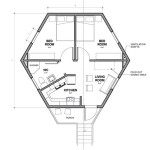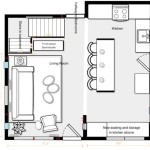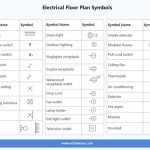Understanding the Floor Plans of Your House
Floor plans are essential visual representations of a building's layout, providing a detailed overview of the spaces within a structure from a bird's-eye perspective. They are indispensable tools for homeowners, architects, interior designers, contractors, and real estate professionals. Understanding how to read and interpret floor plans is crucial for making informed decisions about renovations, furniture placement, and overall property management.
A floor plan typically depicts walls, doors, windows, staircases, and fixed appliances like sinks, toilets, and water heaters. They often include dimensions, room names, and symbols to represent various features. These plans are typically drawn to scale, meaning the measurements on the plan are proportional to the actual dimensions of the house. The scale is usually indicated on the plan, such as 1/4 inch = 1 foot, which means every quarter inch on the drawing represents one foot in the real world.
The information contained within a floor plan goes beyond simple dimensions. It serves as a foundation for numerous aspects of homeownership and property management. Detailed floor plans support renovations, provide context for contractors during repair work, and help with furniture placement optimization. They can also be used for energy efficiency analysis, determining the best locations for insulation and HVAC systems.
Key Elements of a Floor Plan
Accurate floor plans contain specific elements and symbols. The presence and accuracy of these elements are crucial for effectively using the plan. These elements commonly include:
Walls: Walls are generally represented by solid, thick lines. The thickness of the line can sometimes indicate the type of wall, though this is not always consistently applied. Load-bearing walls, which support the structure's weight, can often be distinguished by their thickness.
Doors: Doors are depicted as an arc showing the swing direction and a straight line representing the door itself when closed. The arc illustrates the space required for the door to open. The standard size of the door is also generally marked.
Windows: Windows are typically represented by two or three parallel lines within the wall. The number of lines and their style may vary depending on the architectural drafting standards used. Sizes are generally noted on the plan.
Stairs: Staircases are represented by a series of parallel lines indicating the steps. An arrow is often included to show the direction of ascent. The number of risers (vertical steps) may also be noted.
Fixtures: Fixed appliances like sinks, toilets, bathtubs, and water heaters are usually drawn to scale and placed in their respective locations. These are critical for plumbing and renovation planning.
Dimensions: Dimensions are crucial for understanding the size of rooms and other features. They are usually provided in feet and inches and are clearly marked on the plan. Overall dimensions for rooms and individual features are commonly included.
Room Names: Each room is labeled with its intended use, such as "Bedroom," "Kitchen," "Living Room," or "Bathroom." This aids in quickly understanding the function of each space.
Scale: The scale of the floor plan indicates the ratio between the drawing and the actual building. This is usually shown as a ratio, such as 1/4" = 1'.
North Arrow: The north arrow indicates the building's orientation concerning the cardinal directions. This is useful for understanding sunlight exposure and ventilation patterns.
Symbols: Various symbols are used to represent different elements, such as electrical outlets, switches, and plumbing fixtures. There may be a legend that lists all the symbols used in the plan.
Benefits of Having Accurate Floor Plans
The benefits of having accurate floor plans extend beyond mere convenience. They provide valuable insights and support decision-making related to many aspects of property management. Here is a more in-depth look at some key benefits:
Renovations and Remodeling: Accurate floor plans are essential for planning renovations and remodeling projects. They allow architects and contractors to visualize the existing structure and create detailed designs for modifications. Without an accurate plan, assessing the feasibility of changes and calculating material requirements would be greatly complicated. It is also helpful to determine where electrical and plumbing are located within the space, which can greatly influence the costs of any project.
Furniture Placement: Floor plans help homeowners experiment with different furniture layouts before physically moving heavy items. By drawing furniture to scale on the plan, individuals can evaluate space utilization, traffic flow, and the overall aesthetic effect of different arrangements. This can save time and effort while avoiding potential damage to furniture or the house itself.
Real Estate Transactions: Floor plans are a valuable asset during real estate transactions. They provide potential buyers with a clear understanding of the property's layout, room sizes, and overall dimensions. This can aid potential buyers in determining if the home will work for their lifestyle and if their furniture can be placed successfully within the space. Accurately representing the floor plan can also increase the perceived value and desirability of the property as well.
Insurance Claims: In the event of damage to the property, floor plans can be invaluable for insurance claims. They provide a detailed record of the property's layout and features, enabling accurate assessment of the damage and facilitating fair compensation. Having a floor plan can also help to speed up the claim processing time.
Emergency Planning: Floor plans can be used for emergency planning purposes, such as identifying escape routes, locating fire extinguishers, and determining assembly points. They can also be shared with emergency responders to provide them with a clear understanding of the building's layout during a crisis.
Creating and Obtaining Floor Plans
There are several methods for creating or obtaining floor plans of a house. The best approach depends on the availability of existing plans, the desired level of detail, and budget considerations. Here are some common methods:
Architectural Drawings: Architectural drawings are the most detailed and accurate type of floor plan. They are typically created by architects or designers during the design and construction phases of a building. If the house is relatively new, the local building department or the original architect might have copies of the architectural drawings. These plans usually include detailed dimensions, specifications, and structural information.
Professional Measurement Services: Professional measurement services utilize specialized equipment, such as laser measuring devices, to accurately measure and map the dimensions of a building. They then create detailed floor plans that can be used for renovations, real estate transactions, or other purposes. These services are often more expensive than other options, but they provide highly accurate and reliable results.
DIY Measurement and Drafting: If the house is relatively simple and accurate measurements are not crucial, a homeowner can create their own floor plan using measuring tapes, graph paper, and drafting tools. This method requires careful attention to detail and a good understanding of basic drafting principles. There are also numerous software applications available that can simplify the process of creating floor plans digitally. However, this method is generally less accurate than professional measurement services or architectural drawings.
Online Floor Plan Software: Several online software platforms offer floor plan design tools. These platforms often provide templates and pre-drawn symbols to simplify the process. Some platforms also offer 3D visualization capabilities, allowing users to create realistic renderings of their floor plans. However, the accuracy and level of detail provided by these platforms can vary.
Real Estate Listings: Real estate listings sometimes include floor plans, especially for newer or larger properties. While these plans are often less detailed than architectural drawings, they can provide a general overview of the property's layout and room dimensions. The accuracy of floor plans in real estate listings should be verified before relying on them for critical decision making.
When choosing a method for creating or obtaining floor plans, it is essential to consider the intended use of the plan and the required level of accuracy. For complex renovations or real estate transactions, professional measurement services or architectural drawings are generally recommended. For simpler projects, DIY measurement and drafting or online floor plan software may suffice.
Careful consideration to detail, understanding the various elements and symbols, and ensuring the chosen method matches the desired accuracy will enable effective use of floor plans for various homeownership and property management tasks. Floor plans serve as powerful tools that contribute to informed decision-making, better property management, and enhanced living spaces.

Floor Plans Types Symbols Examples

House Plans How To Design Your Home Plan

Pin On House Layout

Where You Can Buy House Plans Live Home 3d

Love This Size House Plans Floor How To Plan

House Plans How To Design Your Home Plan

Floor Plan Creator And Designer Free Easy App

My Ideal House Floor Plan Plans Courtyard Simple

How To Read A Floor Plan With Dimensions Houseplans Blog Com

My Dream Home Free Design 3d Floor Plans By Planner 5d








